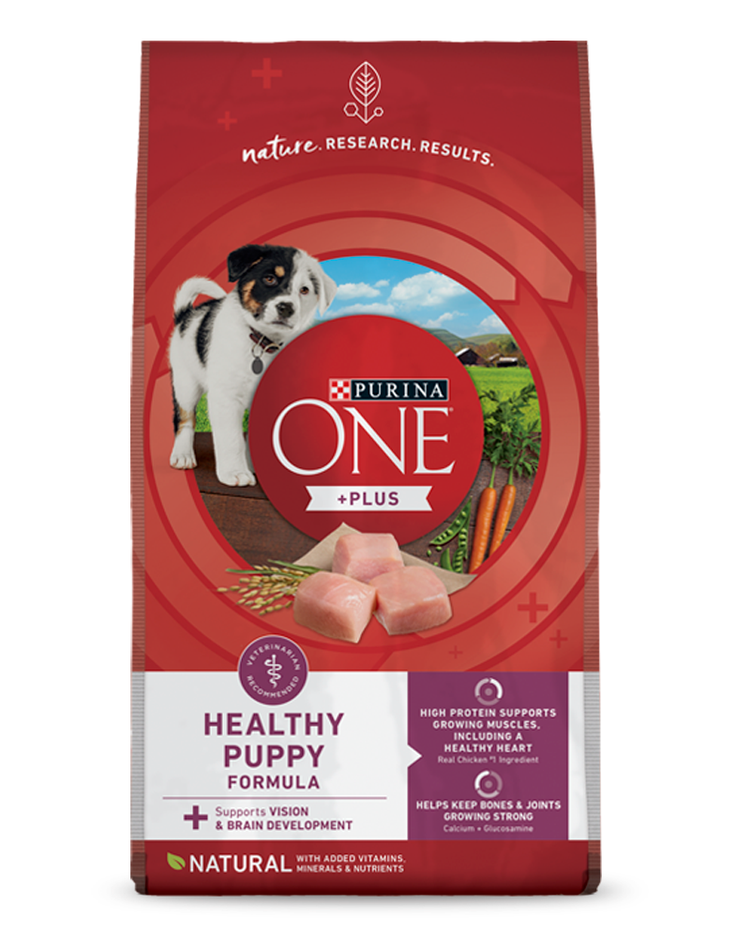Puppy Training: How to Crate-Train a Puppy


If you recently brought home a new puppy, it’s a great time to start crate-training.
Teaching your puppy to use a crate not only helps with potty training, but it also offers them their own space. Dogs find comfort sleeping in small, enclosed areas. Think of a crate as a relaxing, protected destination where they can unwind and have some alone time.
If you’re wondering how to crate-train a puppy, read on for helpful instructions. (You can also watch the “How to Crate-train My Puppy” video—and find lots of other training tips—on the myPurina app.)
What is Crate-Training?
Teaching your dog to use a crate is an important part of puppy training. With crate-training, your dog learns that a crate is a safe and comfortable place to be. Your role is to facilitate their learning by introducing them to their crate and motivating them to use it.
Patience and consistency on your part is key, as puppies need to get used to their crate. Many canines learn to enjoy it, however.
Why Crate-Training is Important
There are a few important benefits to crate-training:
- Provides a comfortable place for your puppy to spend time when you’re away
- Helps set boundaries in your home
- Prevents your puppy from going potty in the house (dogs usually don’t like to relieve themselves in the same place in which they sleep)
- Prepares your pet for car or air travel (dog owners may want to research FAA-approved crates so they can double as an at-home or travel dog crate)
- Acts as a safe place to recover from an injury, if their movement is restricted
- May help with separation anxiety
When to Start Crate-Training Your Puppy
You can start crate-training your puppy around eight weeks of age. If they’re older than eight weeks and haven’t been trained yet, start right away. Puppies are impressionable and often pick up commands and routines faster than, say, older dogs (although adult dogs can be crate-trained as well).
How Long Does it Take to Crate-Train a Puppy?
There is no definitive timeline for crate-training a puppy. Some pets might learn in a week while others take several weeks or months.
You can try to make the process go as quickly as possible by staying consistent with training and always making using the crate a positive experience. Never put your puppy in their crate to punish them.
Your Puppy’s Crate-Training Schedule
By making a crate-training schedule, you can ensure your training occurs consistently, which may accelerate your dog’s learning.
In the beginning, training sessions should be brief periods of time where you simply introduce your puppy to their crate. Use treats and toys to entice them to enter, but don’t force it. Try this a few times per day, every day, until your puppy is comfortable in the crate.
How Big Should a Dog Crate Be?
When learning how to kennel train a puppy, the first step is finding a crate that’s cozy but big enough for your dog to stand up and turn around in.
If your pet has to squeeze through the entrance, the crate is too small. However, if a crate is too big, your puppy may decide to use one part of the crate to relieve themselves and another part to sleep. Add a pad or a blanket to make your dog’s crate a comfortable place.
Note that the easiest crates to clean are wire or plastic crates. Puppies who go outside often may not have accidents in their crates, but an easy-to-clean option may be best until fully potty trained.
A crate is a place your puppy or dog will use for relaxation. To avoid any distractions, it should be a somewhat dark and den-like enclosure.
Hard-sided crates are good at blocking out the light, but if you opt for a wire crate, drape a blanket or towel over it. This provides a sense of enclosure while making sure there’s enough air flow.
Crate-Training at Night
A crate can be a good place for your puppy to sleep at night. However, don’t leave them in the crate overnight until they have been fully acclimated to it.
So, if you’re wondering how to crate-train a puppy at night, first make sure they’re used to the crate, and remember you’ll need to let them outside to go potty throughout the night until they’re older. Remember, while puppies can only hold their bladder one hour for every month of age, most of them can hold it for six to seven hours overnight.
Ensuring your puppy gets enough exercise and doesn’t drink a lot of water before bed can also help them sleep longer in their crate.
How to Crate-Train a Puppy
If you’re wondering how to crate-train a puppy in a few simple steps, try the following:
- Find a permanent location for the crate—somewhere close to where you or other people in the home spend lots of time, yet in an area that has some privacy.
- Introduce your puppy to the crate in a low-stress situation—not when you’re about to leave. Toss in a treat or some dog food and praise your puppy when they enter the crate. Keep the door open to allow them to move around and explore.
- Remove their collar before putting them in, as you don’t want the collar to get stuck on a part of the crate.
- Put a treat in the crate and use simple words like “kennel” or “crate” to get them used to the command.
- Try giving your dog a chew toy as a reward when they start spending more time in the crate. This will help them relax and engage in an activity they enjoy.
- Try feeding your puppy in the crate to reinforce their positive feelings about it.
- Gradually increase crate time with the door closed. Start by closing it for only a few moments, then gradually increase the length of time. Make sure to praise them after you close the door.
- Don’t open the door if they start to whine. That may teach the wrong lesson. Wait for a calm moment before you let them out.
- Remember your puppy’s potty schedule. How long puppies can hold their bladder gradually increases over time. By the time they’re around six months of age, they can hold it for five to six hours during the day.
- No matter their age, avoid leaving your puppy in their crate for more than eight hours. Long stretches of time in their crate can be difficult, both physically and mentally. Remember, the longer your dog stays in the crate, the more exercise they’ll need when you let them out. If your dog has been in a crate for several hours, make sure they get extended playtime afterward.
Until What Age Should a Dog Sleep in a Crate?
Dogs can sleep in crates for their entire lives. The crate is a long-term resource for your pet rather than just a training tool for puppies.
Don’t forget, if you’re curious about how to crate-train a puppy, be consistent and practice patience. Accidents can happen, but if you offer lots of praise and positive reinforcement, you can set your puppy up for crate-training success.
For more helpful training insights, check out the myPurina app.
For more expert tips on training your dog, explore our puppy training page.
For your own personalized dog training plan, download Zigzag, the most advanced dog training app, for free and unlock 1 month of Premium Access with unlimited lessons, tailored guidance, and 24/7 expert support using code PUR30 at payment.
Install Zigzag for free now to get started

Be Rewarded for Your Purina Purchases
Earn and redeem points for Purina products with myPurina app.






